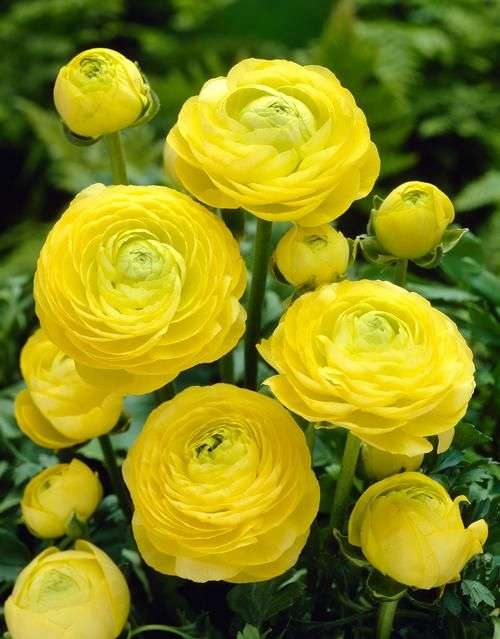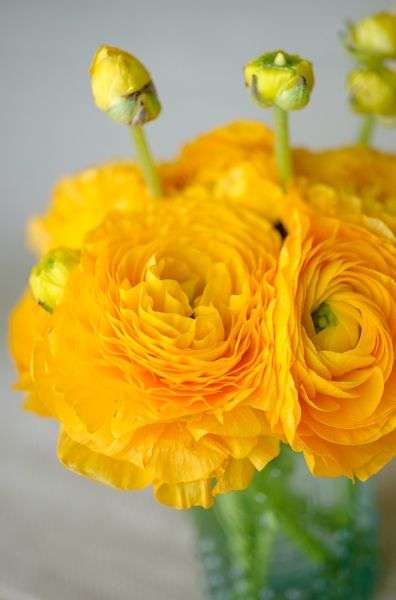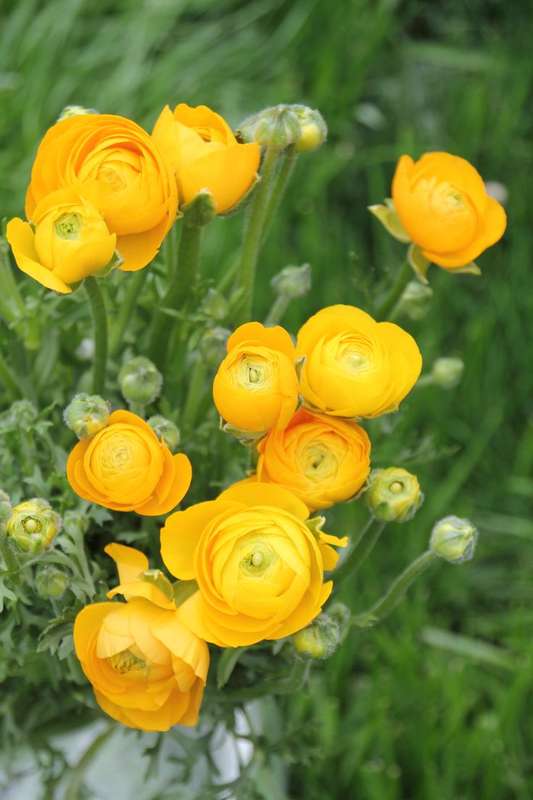





Ranunculus - Yellow - 25 bulbs p-pack
Check my rate
| Main centres: | 1-3 business days |
| Regional areas: | 3-4 business days |
| Remote areas: | 3-5 business days |






| Main centres: | 1-3 business days |
| Regional areas: | 3-4 business days |
| Remote areas: | 3-5 business days |
Ranunculus (Persian buttercups) are admired for their bright, multi-petaled blooms in vibrant colors, and the yellow variety is no exception. Yellow Ranunculus flowers are popular in gardens and floral arrangements due to their striking appearance. In South Africa, they can be grown successfully with proper care and attention to their growing requirements.
Climate:
Ranunculus thrives in cool to moderate temperatures (15—20°C).
The ideal time for planting in South Africa is autumn (March—May) for a spring bloom (August—September).
Avoid planting during periods of extreme heat or frost. The cooler months are best for growing, as high temperatures can prevent the flowers from blooming effectively.
Suitable for regions with milder winters, such as the Western Cape and Highveld.
Soil Requirements:
Prefers well-drained, sandy-loamy or loamy soil rich in organic matter.
Soil pH: 5.5—7.0 (slightly acidic to neutral).
Ensure the soil is not compacted, as this can affect tuber development. Well-drained soil is critical to avoid waterlogging and tuber rot.
Best Planting Time:
Autumn (March—May) is the best planting period for a spring bloom.
For a winter to early spring bloom, make sure soil temperature is between 15—20°C before planting.
Preparing the Tubers:
Ranunculus grows from tuber-like bulbs. Before planting, soak the tubers in warm water for about 4—6 hours to help with sprouting.
After soaking, allow the tubers to dry off slightly.
Planting Depth & Spacing:
Depth: Plant the tubers 5—7 cm deep with the roots facing down and the buds facing up.
Spacing: Space the tubers 10—15 cm apart to allow for healthy growth and airflow.
Row spacing: Leave 25—30 cm between rows to prevent overcrowding and encourage proper airflow.
Watering:
Keep the soil moist but not waterlogged. Ranunculus likes consistent moisture, but too much water can lead to root rot.
Water around the base of the plant rather than wetting the foliage to prevent disease.
Reduce watering once the plants begin to yellow and die back, indicating that the tubers are maturing.
Fertilizing:
Before planting, enrich the soil with well-rotted compost or a balanced organic fertilizer.
During the growing season, apply a low-nitrogen fertilizer to prevent excessive foliage growth. A phosphorus and potassium-rich fertilizer will support blooming and tuber development.
Avoid over-fertilizing with nitrogen, as it promotes lush foliage at the expense of flowers.
Mulching:
Use a light layer of organic mulch (straw, bark, etc.) to help retain moisture, suppress weeds, and maintain soil temperature.
Common Pests:
Aphids, slugs, and snails can affect Ranunculus. Use insecticidal soap or neem oil for aphids. To manage slugs and snails, consider using slug pellets or traps.
Common Diseases:
Powdery mildew and Botrytis (gray mold) can occur, especially in humid conditions. Ensure proper spacing and good air circulation to minimize disease risk.
Watering practices are crucial; avoid overhead watering and water in the morning to allow the plants to dry during the day.
If diseases appear, treat them with appropriate fungicides.
Flowering Time:
Ranunculus typically blooms 8—12 weeks after planting, which means you can expect the first flowers to appear in spring (September—October).
Cutting for Floristry:
To extend the vase life of the cut flowers, harvest yellow Ranunculus when the buds are just beginning to open.
Cut flowers early in the morning when the temperatures are cooler to avoid wilting.
Place the cut stems in cool water immediately to help the flowers last longer.
After flowering, dig up the tubers if you live in an area with cold winters.
Dry the tubers in a cool, dry place before storing.
Store them in a ventilated container with sand or peat and keep them in a cool, dark, dry place until the next planting season.
Companion Plants:
Ranunculus looks great when planted alongside spring bulbs such as tulips, daffodils, and crocuses....